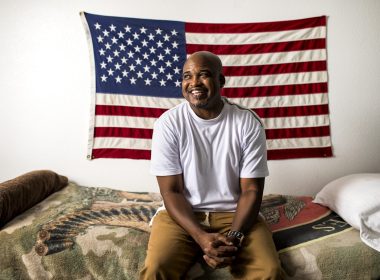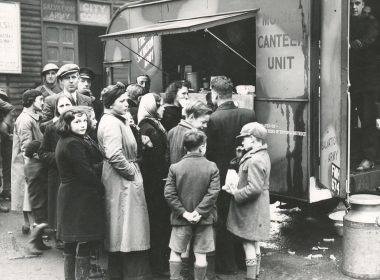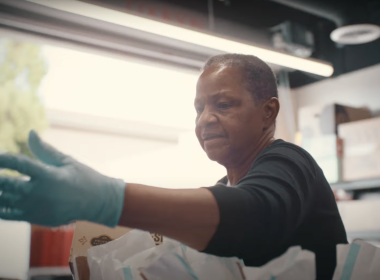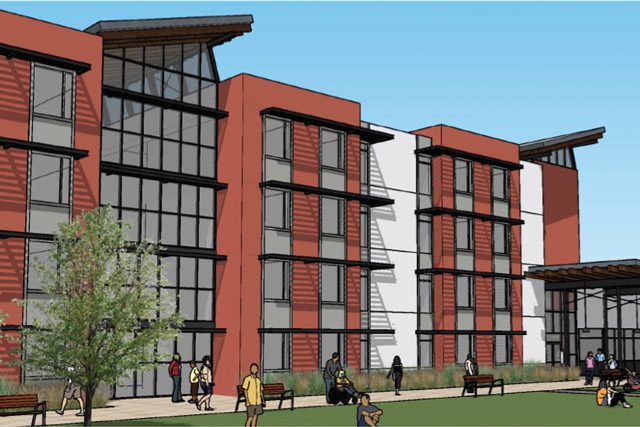Salvation Army needs to raise $27.3 million for project.
By Vivian Lopez –
It’s been nearly two years since philanthropists Ernest and Evelyn Rady donated $50 million to The Salvation Army in San Diego, to combat homelessness with two new projects—the Rady Residence at the Door of Hope and the Rady Center.
The donation was part of a major capital campaign for the construction of these facilities. According to Michele Prosser, Salvation Army San Diego Regional Office Capital Campaign and Donor Relations Director, the Radys pledged $15 million in outright funds if The Salvation Army met designated fundraising and construction milestones—which it did. And they agreed to match up to $35 million in whatever funds the organization raised for construction costs as a permanent endowment to run the programs upon completion.
“It’s really exciting to be working with our team and have the support of the Radys and so many other donors who have already stepped forward, and so many more I’m confident will join us so we can do these two great facilities to benefit San Diego for years to come,” Prosser said.
Today, The Salvation Army has raised 20 percent of the $35 million it needs to raise for both projects to come to fruition. The Rady Residence is a $20 million project, and the Rady Center will be anywhere from $35-50 million depending on how much money is raised.
“We’ve had a lot of support…but we still need to raise a significant amount more,” Prosser said. “We’re really hopeful that next year we can secure a lead gift of a significant amount of that for the Rady Center.”
The Salvation Army broke ground on the Rady Residence last spring, and is expected to open its doors in fall 2020. It will include 32 units and 136 beds, in addition to support services for families experiencing homelessness. Framing has begun on the building.
It’s being constructed where the original 1960s Door of Hope campus buildings once stood, and will be a four-story family services complex. Traditionally, the Door of Hope only housed single women and women with children. But the additional space at this facility will allow for two-parent families—allowing men to stay with their families for the first time.
“We are thrilled that by this time next year, we will be able to help many more families in San Diego change their lives,” said Lt. Colonel Lee Lescano, California South Divisional Secretary for San Diego County.
When families come in for assistance, they’ll be assigned case management, therapy and spiritual and emotional support.
The Rady Center, which will be situated in the heart of downtown San Diego, is currently in the planning stages. Renderings have been drawn for the center, which will replace the Centre City Corps building.
It will consist of up to 300 shelter beds for adults, case management and include a social enterprise component with a commercial kitchen, cafe and market. This will provide job training for clients to secure employment.
“Our goal is, whenever possible, to help people develop a life plan, set goals and then work on achieving those goals that will enable them and their families to live independently and be self-sustained in San Diego,” Prosser said. “If we can raise the money—and it is a Salvation Army policy that we must have secured 80 percent of funds needed for construction to begin—best case scenario we can start building the Rady Center in about two to two and a half years.”
The 2019 WeALLCount Report indicates that there are 8,102 individuals facing homelessness in San Diego County. More than half of them are unsheltered, and nearly 63 percent reside in the City of San Diego alone. The progress of both projects is a big step in the right direction to meeting the needs of the homeless population in the San Diego area.
Lescano said the construction of the new facilities and expansion of services will help the organization serve up to 11,000 individuals per year in San Diego.
“To see these projects take shape is an answer to prayer,” Lescano said. “Not only will we transition these individuals from homelessness to a stable living environment, but give them the tools to continue to improve their lives and their families’ lives. With the experience and network of services…and necessary facilities and space, we hope to be a catalyst for those coming to us to regain hope and experience transformational change.”











